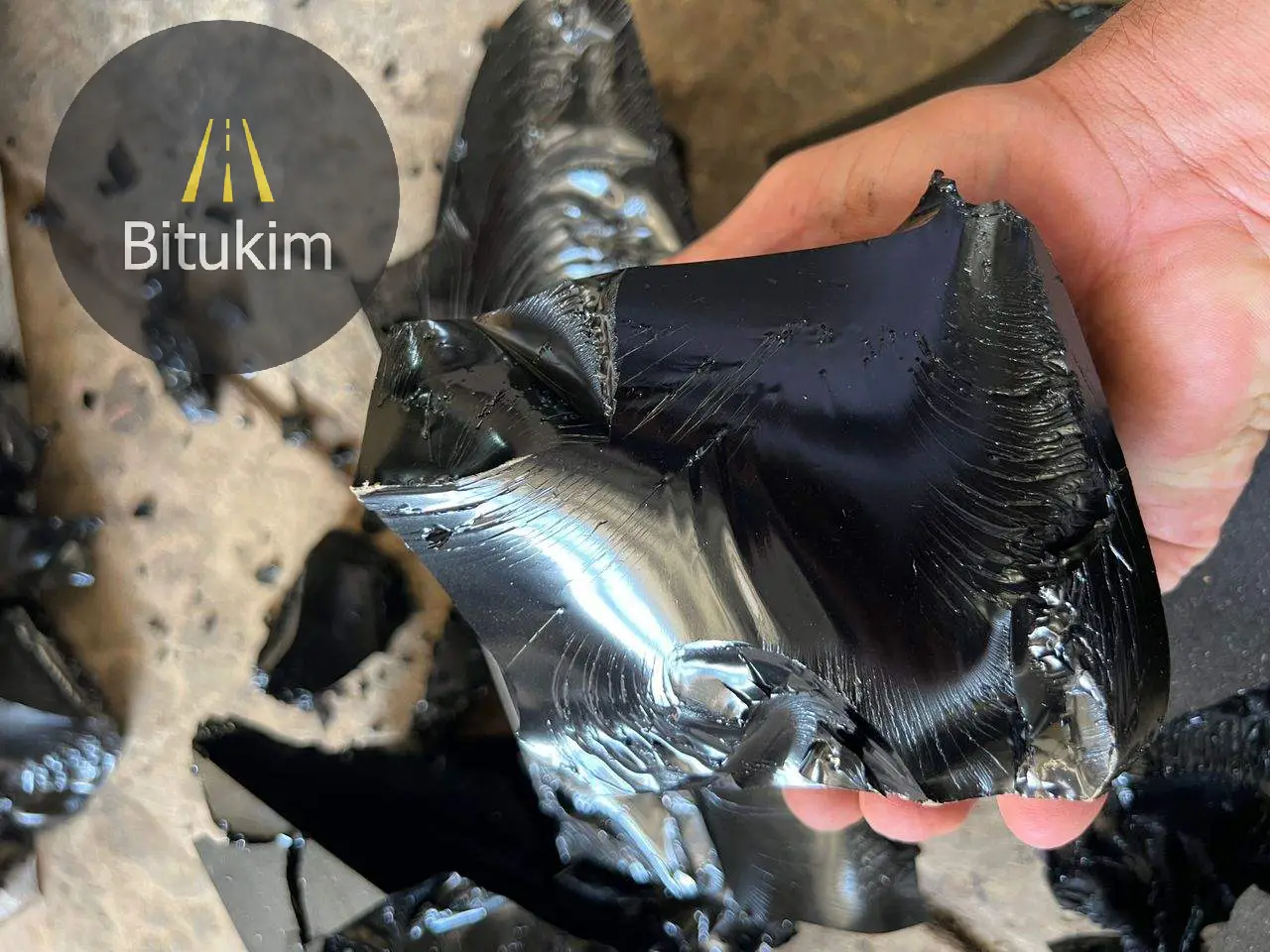
In the demanding world of construction and industrial materials, partnering with a reliable Oxidized Bitumen 115/15 supplier is critical for project success. Bitukim stands as a premier manufacturer and global exporter of premium Blown Asphalt 115/15, engineered for unparalleled durability and performance in the most severe environments. This guide details why engineers and procurement managers worldwide trust Bitukim for their high-specification bitumen needs. (Contact Us)
What is Oxidized Bitumen 115/15?
Oxidized Bitumen 115/15 (also known as Blown Asphalt or Blown Bitumen) is a semi-solid hydrocarbon produced by blowing hot air through pure petroleum bitumen. This controlled oxidation process, perfected by Bitukim’s manufacturing experts, elevates the material’s softening point and reduces its penetration, resulting in a harder, more resilient, and temperature-resistant product essential for specialized applications.
Key Properties of Bitukim’s 115/15 Grade
As a leading Oxidized Bitumen 115/15 supplier, Bitukim guarantees products that meet precise specifications:
-
Softening Point: 115°C (Ring & Ball)
-
Penetration: 15 dmm (at 25°C)
-
High Thermal Stability: Superior resistance to flow in high-temperature climates like the Middle East, Africa, and Asia.
-
Durability: Exceptional weathering, UV, and chemical resistance for long-term projects.
-
Waterproofing & Adhesion: Forms a perfect, impermeable seal with excellent adhesive properties.
Applications of Blown Asphalt 115/15
Bitukim’s product is a versatile industrial bitumen used in critical applications:
-
Roofing and Waterproofing Membranes: For flat roofs, terraces, and wet areas.
-
Paving & Road Construction: In expansion joints, bridge decks, and crack sealants.
-
Pipe Coating: Provides superior corrosion protection for steel pipelines.
-
Electrical Cable Insulation: Used for its excellent dielectric properties.
-
Manufacturing: Serves as a key raw material in mastics, sealants, and adhesives.
Why Source Your Bitumen from Bitukim?
Choosing the right Oxidized Bitumen 115/15 supplier impacts your project’s quality, budget, and timeline. Bitukim offers distinct advantages:
-
Direct Manufacturer & Exporter: We control the entire production process, ensuring quality from source to site and offering competitive bulk pricing.
-
Rigorous Quality Control: Every batch is tested against international standards (ASTM) to guarantee consistency and performance.
-
Global Logistics Expertise: We are a seasoned global export partner, seamlessly shipping to projects worldwide with flexible packaging options (25kg bags, drums, blocks).
-
Technical Support: Our team provides expert guidance to help you select the right bitumen product for your specific application.
Contact Your Premier Oxidized Bitumen Supplier Today
Ready to secure a reliable supply of high-quality Blown Asphalt 115/15? Bitukim is your partner for success.
Request a FREE Quote and Technical Data Sheet Today!
Our team is ready to provide competitive pricing, detailed specifications, and discuss your global delivery options.
Bitukim – Your Partner in Quality & Construction
-
Address: Dubai Office: No. 2305 of the Burlington Tower, Business Bay, DUBAI-UAE
-
Phone: +(971) 4 566 4998
-
Mobile: +971 (50) 940 9246
-
E-mail: info@bitukim.com
Specification of Oxidized Bitumen
The oxidized asphalt grade 115/15 means the softening point is 115°c and penetration is 15 desi millimeters is produced in compliance and conformity to ASTM standards and meets the following specifications:
| Bitumen 115/15 | Test method | Unit | Specification |
|---|---|---|---|
| Specific gravity @25/25 C | ASTM D70 | (Kg/m3) | 1.05 approx. |
| Penetration @ 25°c | ASTM D5 | mm/10 | 10/20 |
| Softening point °c | ASTM D36 | °C | 110/120 |
| Ductility @25 °c | ASTM D113 | Cm | 1.5min |
| Loss on heating(wt) % | ASTM D6 | Wt. % | 0.2 max |
| Flashpoint c | ASTM D92 | °C | 250 min |
| Solubility is CS2(wt) % | ASTM D4 | Wt. % | 99.5 max |
| Spot test | A.A.S.H.O.T102 | — | Negative |

